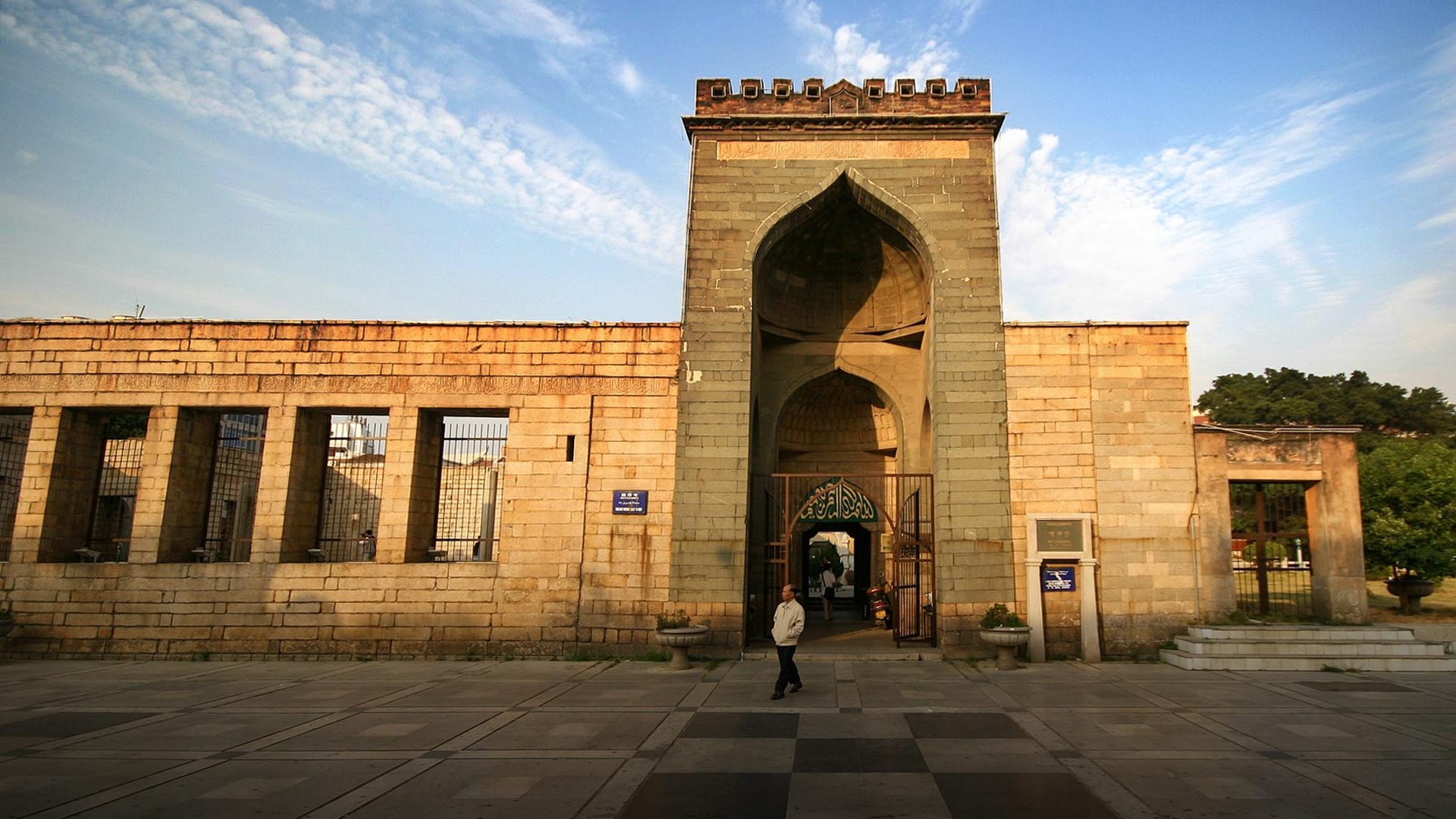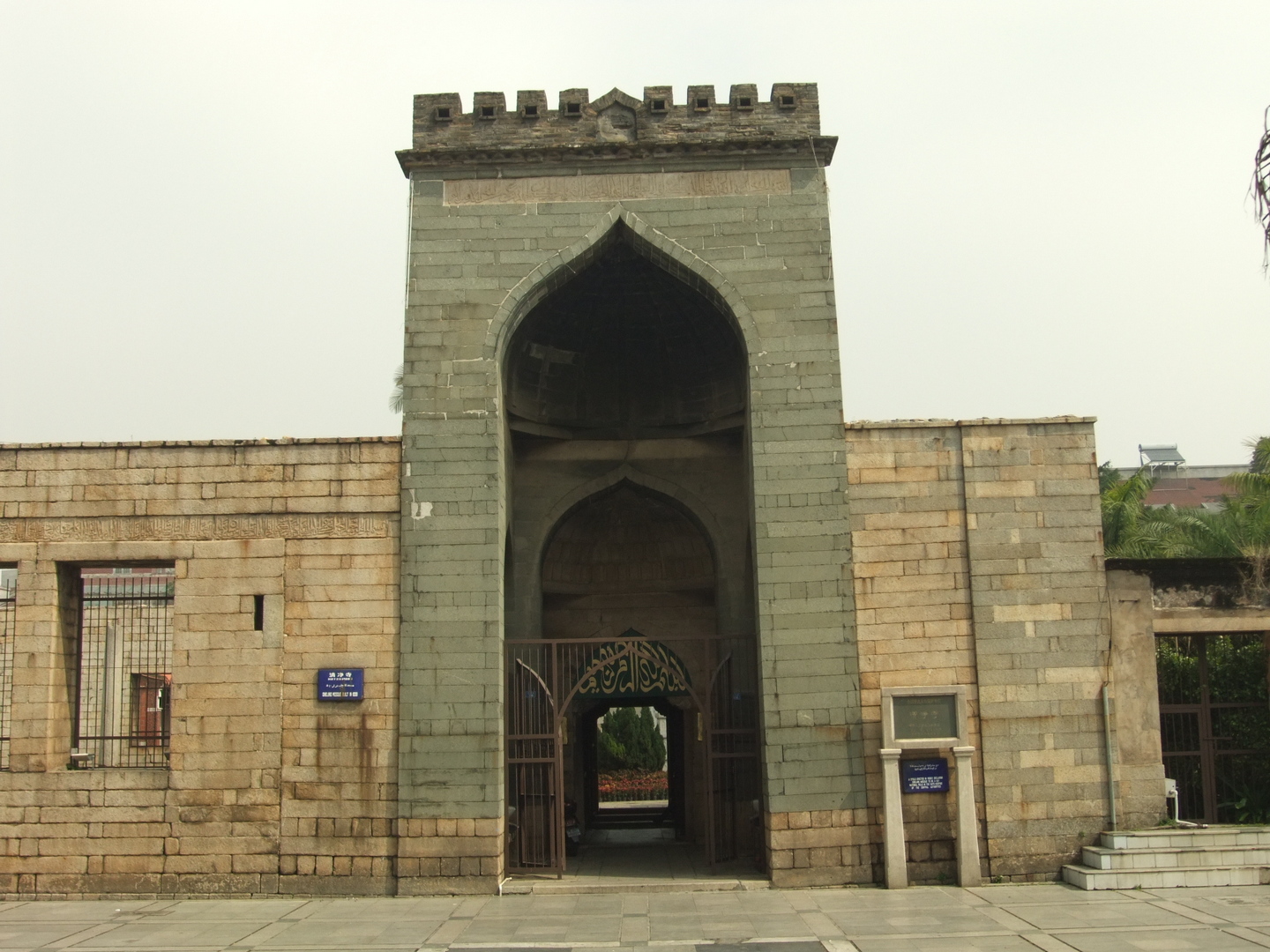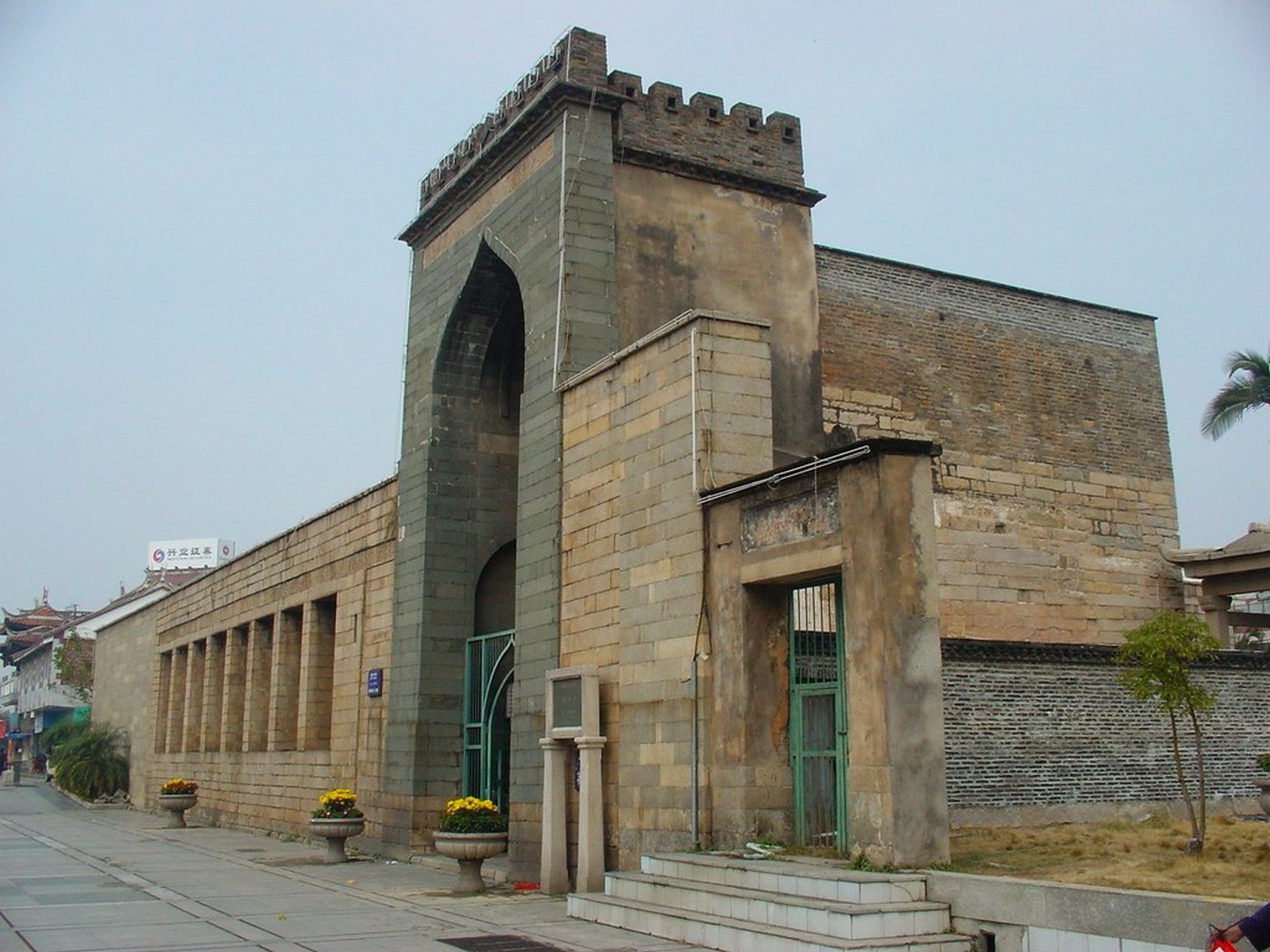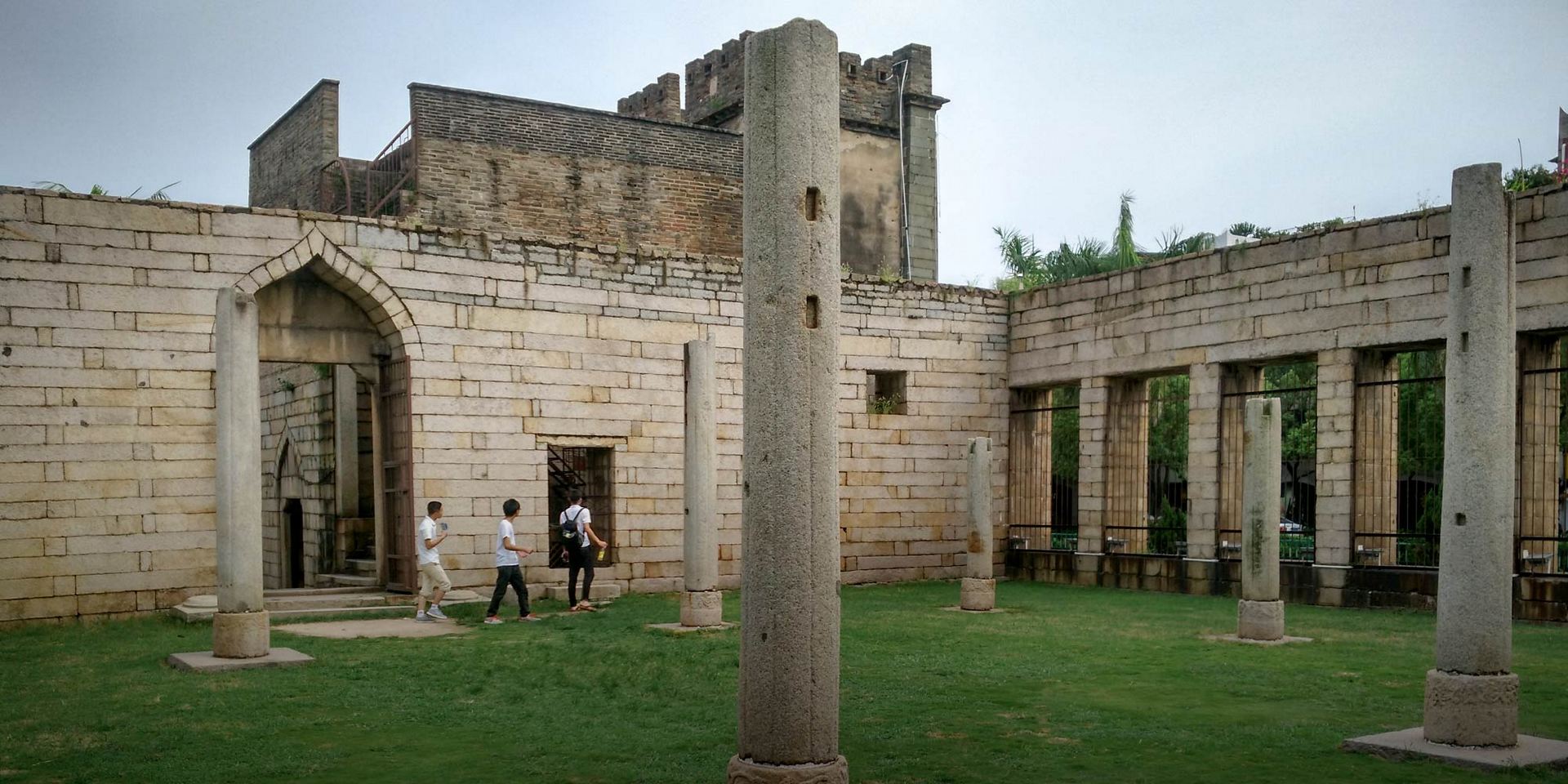Description
Property Name: The Great Mosque of Quanzhou
Inventory No: 86-595-1
Date of infill of the inventory form: 2009-08-19
Country (State party): China
Province: Fujian
Town: Quanzhou
Geographic coordinates: 24° 54′ 26.63″ N
118° 35′ 13.59″ E
Historic Period: 14th century, 1st half
Year of Construction: 1310 reconstruction
Style: Hui
Original Use: Mosque
Current Use: Mosque
Architect: Unknown
Significance
The mosque has an importance as being one of the earliest Islamic examples. Other than being one of the earlier examples, the mosque is also the earliest existing stone made mosque. Today the remains of the mosque are known to be dating from the 1310 reconstruction; nevertheless there is an inscription on the northern portal wall, indicating the date of 1009 (throughout the Song Dynasty between 960-1279). This means the mosque has been reconstructed on earlier remnants. The reconstructions are comprehended from the two stone tablets, expressing a reconstruction during Yuan Dynasty (1271-1368) and another one in Ming Dynasty (1368-1644). Architecturally, the local traditional Chinese courtyard hierarchy does not exist; however there is still an effort on integration of Chinese and Islamic architecture. The portal is unique with its semi-vaulted capping and also the portal is the minaret of the complex which is a rare situation for the mosques; as portal behaving like the minaret. The main prayer hall which is unfamiliarly located just next to the entrance portal is notable with its roofless space.
Selection Criteria
iii. to bear a unique or at least exceptional testimony to a cultural tradition or to a civilization which is living or which has disappeared
iv. to be an outstanding example of a type of building, architectural or technological ensemble or landscape which illustrates (a) significant stage(s) in human history
vi. to be directly or tangibly associated with events or living traditions, with ideas, or with beliefs, with artistic and literary works of outstanding universal significance
State of Preservation
The complex, in general keeps its original settlement position. It is partly ruined. The building of today is a product of the 14th century, nevertheless, a secondary prayer hall (Ming-Shan Tang) was founded in 1609 as an enlargement in the complex. The dome of the main prayer hall (Fengtian Hall) does not exist anymore as a result of an earthquake; however, although the hall is a ruin, the granite walls are still well preserved. Therefore, the later addition, Ming-Shan Tang hall hosts the religious rituals. Recently, restoration of this part was intended but it wasn’t realized till now. Another fragment which was recently renovated is the old well used for ablutions. This structure has been well preserved and beautifully restored to the present day. The date of the last restoration is unknown in this structure. But this Mosque is open to worship and continues to exist.
References
Frishman, Martin- Khan Hassan Uddin. The Mosque History Architectural Development and Regional Diversity, London 1994
Jing-qui, Zhang. 1982. Mosques of Northern China. In MIMAR 3: Architecture in Development. Singapore: Concept Media Ltd., 58
Chang, Jing Qi. 1982. Islamic Architecture in China. In The Changing Rural Habitat; Volume 2: Background Papers. Brian Brace Taylor (ed). Singapore: Concept Media/The Aga Khan Award for Architecture.
Dazhang, Sun. 2003. Ancient Chinese Architecture: Islamic Buildings. New York: Springer-Verlag/Wien, 119, 125, 142.
Jing-qui, Zhang. 1982. Mosques of Northern China. In MIMAR 3: Architecture in Development. Singapore: Concept Media Ltd., 58.
Mitchell, George. 1978. Architecture of the Islamic World. London: Thames and Hudson, 280.
Petersen, Andrew. 1996. “China”. In Dictionary of Islamic Architecture. London: Routledge, 52-54.
Xiaowei, Luo. “China” in Ed. Martin Frishman and Hasan-Uddin Khan. 1994. The Mosque: History, Architectural Development and Regional Diversity. London: Thames and Hudson. 209-212, 216.
Website of Archnet: http://www.archnet.org





